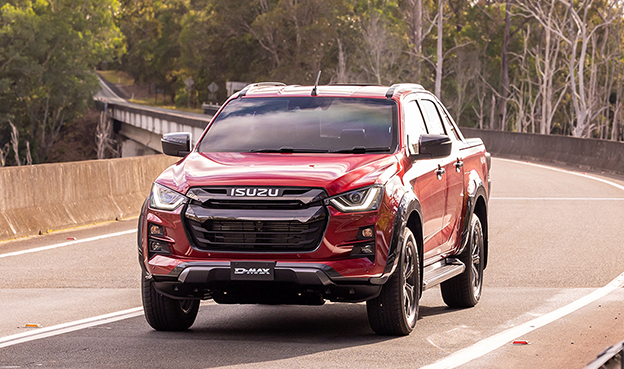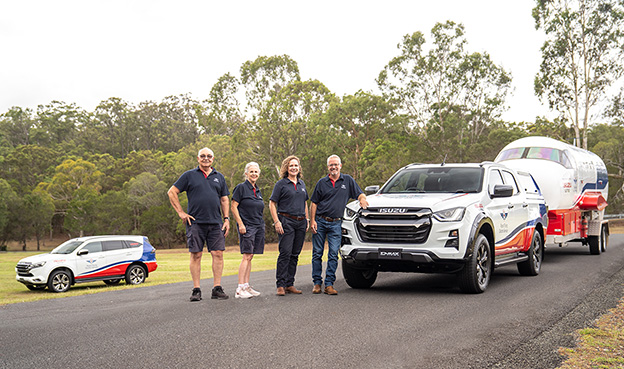

Your company escorts oversized loads across the country. What’s the weirdest thing you’ve transported?
Ah! There was a giraffe named Sky that we moved from Australia Zoo on the Sunshine Coast to Dubbo Zoo. When I was first contacted by telephone they said, “Listen we need a height survey. We’re gonna move a giraffe.” As you can imagine there’s a few bridges between Australia Zoo and Dubbo that need to be measured because you definitely don’t want to decapitate your load. And power lines, too, because you don’t want to barbecue it on the way down either.

Wow. What else?
My company doesn’t specialise in anything in particular—we work right across the board. We could be moving 10-metre-wide houses around Brisbane or interstate in one piece. Or a 9-metre-wide piece of mining equipment weighing 100-150 tonnes. Or a 100-metre-long wind farm blade. And, less regularly, we might take 150-200-tonne pieces of equipment, such as tunnel boring machines, on a 900km road trip.
There’s a surprising amount of large stuff that needs shifting.
One thing is the significant infrastructure works that people don’t think of. They drive over a bridge and they don’t realise that there are 100-tonne concrete beams that needed to be brought in to be lifted into place, for example.
You put astonishingly large numbers on all of your D-MAXs. Can you give us a few examples?
Yes, as of last service one D-MAX has done 745,359km. We got it in 2018. It’s not to be confused with our sixth Isuzu, which has done about 523,000km in three years. And the second D-MAX we ever bought was sold for more than half the purchase price as a cab chassis in May 2022 after four years. It had more than 602,000km on the clock! Excellent resale value.
Why did you choose the D-MAX?
These are vehicles that we drive to make money. We don’t drive them to employ mechanics to improve their ability to make repairs. They are work vehicles, but they’re still comfortable to drive, and they’re still enjoyable behind the wheel. When you’re on a return and you're not working, you can put your tunes on and kick back.

Putting 523,000km on your 2021 D-MAX is impressive, has anything gone wrong?
Apart from getting a puncture a week, no. We service each of the vehicles in the fleet every 15,000km, and over the last 500,000kms we have only needed to replace the oils, fluids and filters. The engine and transmission are original and haven’t needed any major work—it has served us well and I’m sure with maintenance it’ll clock up more than the 745,000kms on our other D-MAX.
What is the hardest part of the job?
Dealing with traffic infrastructure—plotting a course around bridges that are too low, and alternative courses, for example—and traffic in the metropolitan areas.
When you’re dealing with stuff that big, can things easily go wrong?
Yes! Actually, the longest job we ever had was sitting beside the road babysitting a piece of mining equipment that got bogged when someone in a car didn’t want to share the road with us and forced us off the tarmac. Once you’re off the asphalt and weighing 150 tonnes, it sinks up to the axles fast. It took four days for the recovery vehicles to pull it out.
We weren’t expecting to be speaking with you about giraffes, I must say.
There’ve been other fun ones! We picked up a C-47 Dakota aircraft out of HMAS Albatross at Nowra and took it up to the Amberley Aviation Heritage Centre. It took three days for that trip. You don’t get much cooler than that!





